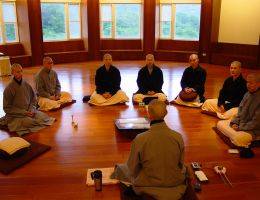News

January 07, 2020
Basic Questions to Chinese Buddhism: How Many Kinds of Buddhist Practitioners Are There?
 Laypersons who have sought refuge in the Three Jewels and have taken the five precepts are upāsakas. Laity who keep the eight precepts or live in the monastery are said to be upholding the upavāsa precepts. Clergy who have taken the ten precepts are śrāmaneras or śrāmanerikās, and clergy who have received the full precepts are bhiksus or bhiksunīs.
Laypersons who have sought refuge in the Three Jewels and have taken the five precepts are upāsakas. Laity who keep the eight precepts or live in the monastery are said to be upholding the upavāsa precepts. Clergy who have taken the ten precepts are śrāmaneras or śrāmanerikās, and clergy who have received the full precepts are bhiksus or bhiksunīs.The purpose of this stage was to verify that a woman was not pregnant and that she could adapt to life as a nun. Practitioners who have taken the bodhisattva precepts do not necessarily belong to any of the nine groups, because anyone, even non-human sentient beings such as animals, can keep the bodhisattva precepts.
Resources
Orthodox Chinese Buddhism, How Many Kinds of Buddhist Practitioners Are There ?, p.62
Book Store
Book Store
